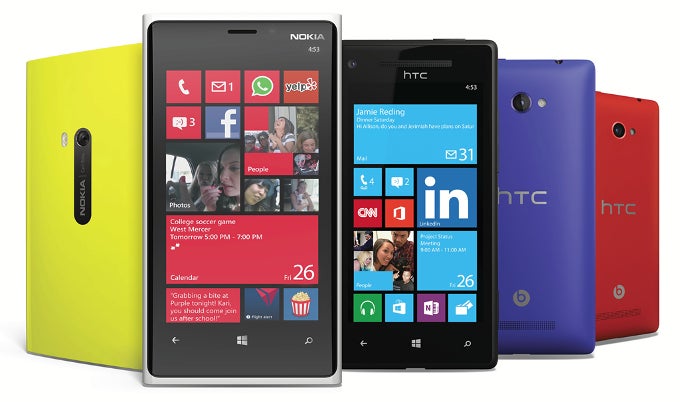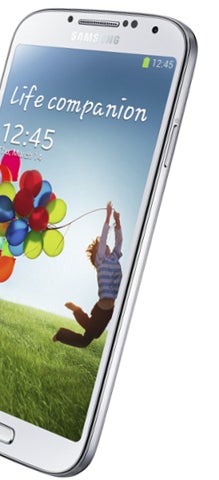On the lookout for a new smartphoneWe've all been there. That glorious time when we're out on the market, looking for a flashy, new smartphone to replace our hugely outdated device. It's a time of joy, excitement and discovery! But even in a saturated and booming market, such as the smartphone one, it's quite surprising how finding what's best for you may prove to be so difficult. My personal experience from a few weeks ago was particularly challenging.
Let me give you some background first.
I'm a long-time iPhone user who recently decided that the moment has come to move on to a more “
flexible” and “
open” experience. Naturally, there's only one mobile OS that comes to mind in such a case nowadays - Android. Having gotten used to the 'it just works' type of user experience with my iPhone, though, I didn't simply want an Android device. I wanted a high-end, polished product that aimed to deliver a feature-rich, yet streamlined package, so that's why I didn't waste much time choosing and went straight for the Samsung Galaxy S4. After all, how could you go wrong with one of the very best Android handsets out there? The Galaxy S4 has a super high-res screen, awesome camera, future-proof processor... I've made a true no-compromise decision, right? Well, it turns out I was wrong, and while I'm absolutely not trying to convince anyone that the Galaxy S4 isn't a good product, I'll just speak my mind as to why I decided to change it for a seemingly inferior smartphone. And boy am I happy I did so.
Defaulting to Android - not always a good idea
It's not that I wasn't happy with the GS4 at first, but as time went by the joy of getting my hands on this cutting-edge device started to make way for that nagging feeling that you have when you don't belong. Such was my relationship with Samsung's finest. Aside from the few technical issues I had with the phone, such as its poor outdoor visibility and occasional stuttering, the real problem for me was the lack of attention to detail in those areas that I really cared for. Truth be told, I love smartphones, but I rarely play games, watch full-length movies, or use other heavy-duty apps on them. That's mainly because I don't have the time, and when I do have time for some entertainment, I usually prefer the comfort of my desktop. So, my smartphone usage is mostly limited to calling, texting, email, browsing, social networking, as well as the occasional ebook reading and YouTube video watching. Of course, I also use typical smartphone tools such as the calendar, notes and navigation. As you can see, one can argue if I can really call myself a heavy user, as I mostly stick to the basic neсcessities, but the important thing is that I do use them a lot, and I really demand that those core smartphone features are executed as well as possible.
It turned out that the Samsung Galaxy S4, as powerful as it is, is actually the exact opposite of what I needed. Crammed with all kinds of features and options, this is a smartphone that is a jack of all trades, but master of none. While it can run the heaviest 3D games out there, its homescreen UI often stutters. While there are more than five ways to dial a contact, the phonebook itself is a mess. Battery life is also spectacularly short, despite my relatively modest needs. And, of course, while the screen is very big... the phone itself is also very big (just like any other Android flagship), which is definitely not a plus. Encased within a few thin pieces of plastic and full of UI inconsistencies, I realized that there's not much for me in the GS4 beyond its status of a cutting-edge device, which is why I made the decision to jump the Android ship about a month after I got on board. The ability to play various 3D games or install hundreds and hundreds of apps wasn't enough to keep me there, because I rarely took advantage of it.
But where to? “I should probably go back to my iPhone and hope that Apple's going to shake things up with iOS 7 and the next iPhone.” Such was my thinking back then, but then iOS 7 came along and I was somewhat disappointed by the new design direction and the lack of new jaw-dropping features. The redesign was obviously the thing Apple hoped to wow us with, but for me, it didn't work. My anticipation for Apple's upcoming smartphone software was quickly drowned in generic-looking icons and buttons that didn't look like buttons. Oh dear, I needed a new smartphone, but didn't have an idea which way to go.
Embracing Windows Phone
As desperation slowly started to settle in, it suddenly hit me – I like Nokia's Lumia range, but had largely ignored it thus far because of Windows Phone. Why? Well, you know, Windows Phone doesn't have a very rich app ecosystem yet, and let's just say that you have to be a really brave user in order to embrace Windows Phone right now, having in mind Microsoft's complete underdog status. However, it turned out that the third ecosystem can actually offer almost every single feature that I use in my daily grind. Design-wise, Windows Phone seems to be taking the middle ground between iOS and Android. It's neither tightly closed, nor too wide open. It offers things like USB mass storage, live tiles and a great navigation system, courtesy of Nokia, but it's also free from redundant OEM customization efforts and “extra” features that few people are ever going to need. It is also much more consistent and has the look and feel of a complete and polished product.
Even though Windows Phone is fairly easy to use, there is some learning curve with this platform, as it strives to do a lot of things differently. Once you get the hang of it, though, and personalize your homescreen so that it caters to your personal preferences, most everything can be accomplished quickly and easily.
Of course, when considering a purchase of a Windows Phone device, Nokia was the only logical decision for me, due to their commitment to the platform and arguably superior hardware, compared to the other WP vendors. In my opinion, the Lumia phones are great-looking products, and thanks to robust services like Here Maps, Here Drive, Nokia Music and some others, they are actually very decent packages that leave few gaps in terms of core functionality. That's why I decided to make what was probably my boldest move in the smartphone world yet and go for a Nokia Lumia 720. I decided to pick this mid-range handset because I liked the size and its overall great price-quality ratio. I don't regret this move one bit. Sure, the Windows Phone Marketplace looks pretty barren, but for a user that mostly sticks to basic apps like a versatile calendar, email and YouTube, it has everything needed.
I truly enjoy my Windows Phone experience with the Lumia 720 because it allows me to have things like appointments, weather and contacts accessible directly from the homescreen, in a way that doesn't compromise consistency and design. Everything works like a well-oiled machine, and while one cannot really go as deeply as with Android, the beauty of WP is that you rarely need to, because Microsoft has already taken care of the important things. For example, I don't need to go and look for a third-party QWERTY keyboard (there aren't any, of course), because the stock one is outstanding.
As I said, Windows Phone seems to be taking the middle ground between iOS and Android. It's neither too closed, nor too open. That in itself doesn't make it the perfect OS, of course, as there's still much to be done, but it shapes up as a great fit for those users who desire a bit more freedom than what their iPhones offer, but who also aren't willing to go all the way to an open platform that requires the user to “manage” every single aspect of the platform to have a satisfying experience.
At the end of the day, I have discovered that there's nothing to fear in having a Windows Phone as your primary handset, as long as you aren't doing stuff that's not yet available for the platform, which includes some popular social apps, or many of the high-profile games that are yet to grace the Marketplace. But, just in case those things aren't on your must-have features list, Windows Phone, as found on a quality Nokia Lumia device, has proven that it can offer a compelling and worry-free experience, and that's very promising, because the platform's app store is only expected to grow with time.















Things that are NOT allowed:
To help keep our community safe and free from spam, we apply temporary limits to newly created accounts: